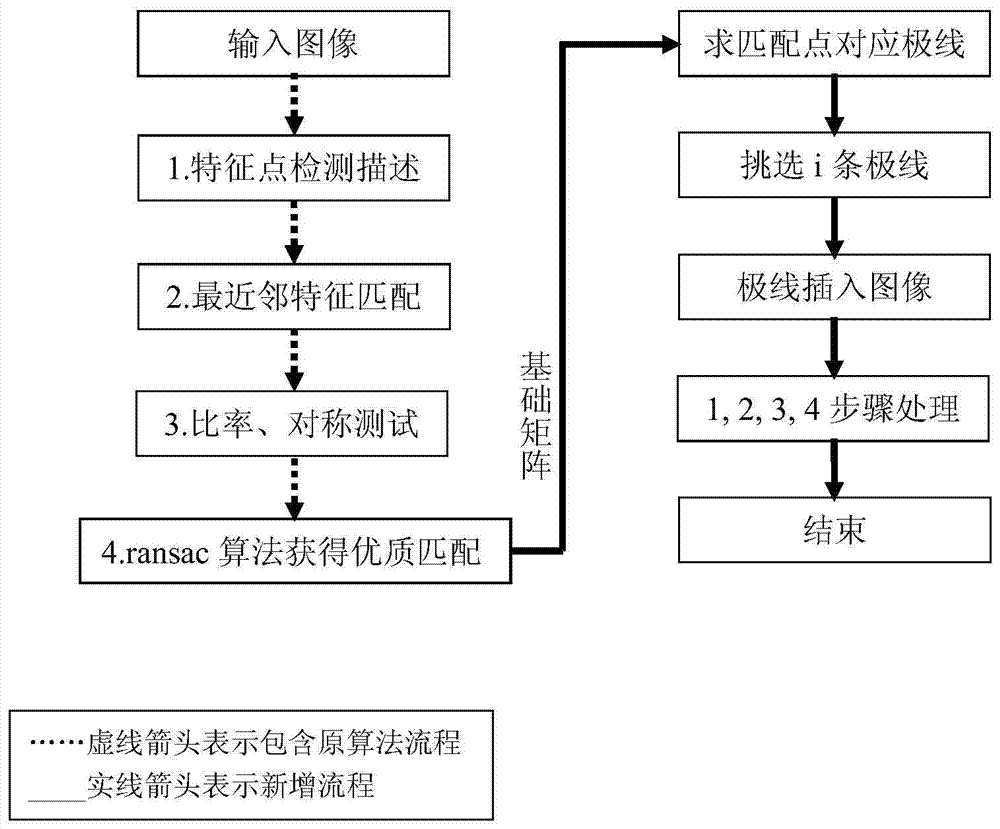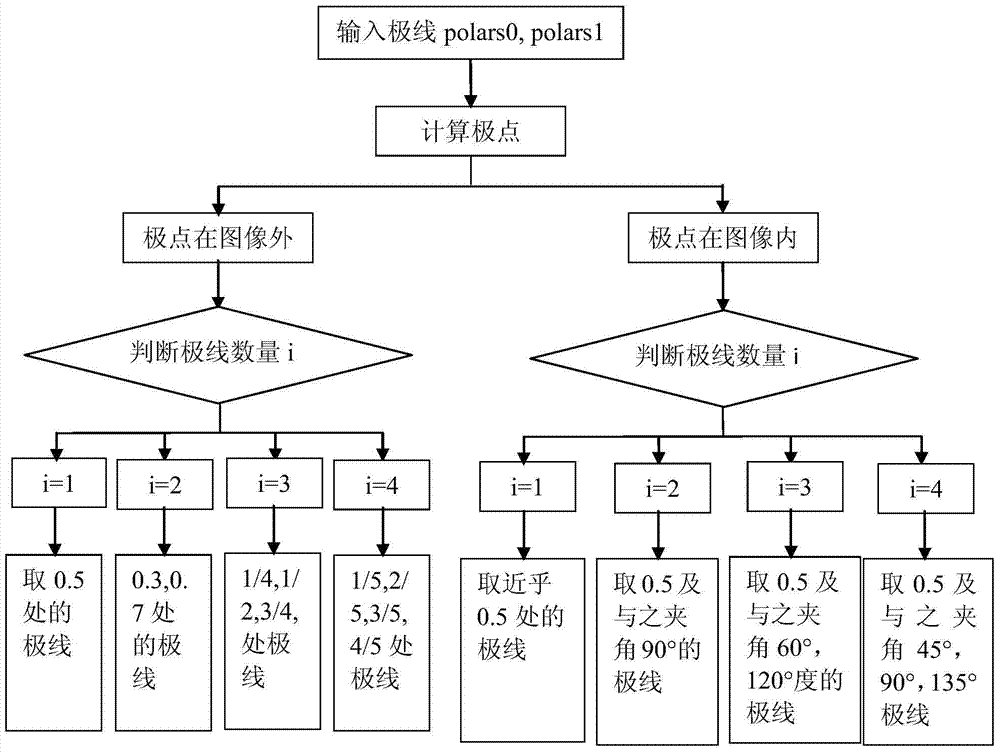Optimal method of ransac feature matching based on epipolar line interpolation image
An optimization method and feature matching technology, applied in image analysis, image data processing, instruments, etc., can solve the problems of few high-quality matching of image feature points and low accuracy, and achieve the effect of excellent quality and high accuracy
- Summary
- Abstract
- Description
- Claims
- Application Information
AI Technical Summary
Problems solved by technology
Method used
Image
Examples
Embodiment 1
[0036] Such as figure 1 As shown, the specific process of applying the present invention to optimize the matching of image features is as follows:
[0037] Step 1: Find the fundamental matrix and obtain the high-quality matching set of the original algorithm. The detailed process is as follows figure 2 shown;
[0038] Step 1-1: Input two images image1 and image2 to be matched;
[0039] Step 1-2: Use the surf detector to detect the keypoints of the two images respectively, and use the surf descriptor to calculate the 64-dimensional descriptor of the keypoints;
[0040] Steps 1-3: Use the matcher to perform two-way matching on the descriptor. That is: find the two best matches of each feature point of image1 to image2, and then find the two best matches of each feature point of image2 in image1.
[0041] Steps 1-4: Perform ratio detection. That is: process two matching sets separately, and calculate the distance ratio of the two values for the two matching values in ea...
Embodiment 2
[0066] When the number of fixed polar lines is 2, the comparison between the present invention and the original method includes:
[0067] The results shown in Table 1 indicate the number of detected feature points and the final number of high-quality matches (the thickness is 0 means the original algorithm did not introduce epipolar lines).
[0068] It can be seen from Table 1 that in the case of the original algorithm without introducing epipolar lines, figure 1 with figure 2 The feature points of are 1478 and 1452 respectively, and the matching number is 15. When the epipolar line is inserted, as the thickness increases, the number of feature points and matching numbers both increase first and then decrease. When the thickness is 10, the high-quality matching can reach 22, which is 47% higher than the original algorithm.
[0069] Table 1: Comparison of high-quality matching results when the thickness of the inserted polar line is different
[0070]
[0071] Note: Th...
Embodiment 3
[0073] When the fixed epipolar line thickness is 5 pixels, the comparison between the present invention and the original method includes:
[0074] Table 2 shows the comparison of matching results under different conditions when the thickness of the fixed epipolar line is 5 pixels. It can be seen that the high-quality matches obtained by the original method (number=0) are 15, while the number of epipolar lines in the present invention is between 1 and 4. When the number of inserted epipolar lines is 4, the effect is the best. The premium hits can reach 23, a 53% improvement.
[0075] Table 2: Comparison of high-quality matching results when the number of inserted polar lines is different
[0076]
[0077] Note: The data fixedly inserts epipolar lines at a thickness of 5 pixels; number is the number of inserted epipolar lines; number = 0 indicates the matching result of the original method, that is, does not insert epipolar lines, and directly operates on the entire image. ...
PUM
 Login to View More
Login to View More Abstract
Description
Claims
Application Information
 Login to View More
Login to View More - R&D
- Intellectual Property
- Life Sciences
- Materials
- Tech Scout
- Unparalleled Data Quality
- Higher Quality Content
- 60% Fewer Hallucinations
Browse by: Latest US Patents, China's latest patents, Technical Efficacy Thesaurus, Application Domain, Technology Topic, Popular Technical Reports.
© 2025 PatSnap. All rights reserved.Legal|Privacy policy|Modern Slavery Act Transparency Statement|Sitemap|About US| Contact US: help@patsnap.com



